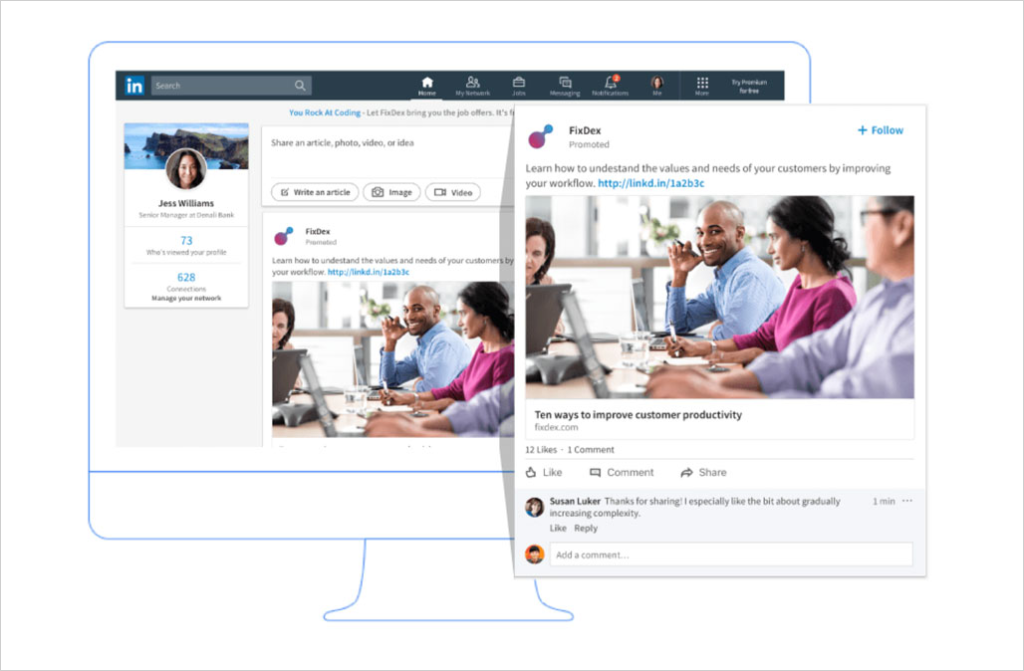The global COVID-19 pandemic has created a wide range of new business challenges for B2B companies. One of the most under-recognized among them stems from our spontaneous transition to working remotely — and no, I’m not talking about barking dogs or bored kids. I’m talking about the impact on paid media programs.
Most B2B brands are trying to reach specific stakeholders at a subset of companies within limited industries. To successfully reach such narrow audiences, these programs often rely on IP addresses for account-specific ad targeting. Ad serving solution providers compile lists of target company IP addresses. Then, when the system detects activity from one of those addresses on a website within the advertising display network, it serves up account-based ads.
But when everyone is working from home, IP addresses usually map back to the residential internet service providers (ISPs) — not their employers. So, even if your ideal customer visits your website, reverse-IP analytics will mistake their “business” as Comcast, Spectrum, Verizon, etc. and fail to recognize them properly. (And if your company happens to serve the telecom industry, you have my deepest sympathies.)
So, how can you ensure that your paid media is reaching the right business buyers — even on their couches? Two words: social and programmatic.
Let’s look at two very important media opportunities: paid social media and programmatic advertising.
1. LinkedIn knows who your buyer is
During any crisis, social media becomes even more important. During periods of extended self-isolation, like COVID-19, people yearn for connection. Even more, we rely on social media channels for updates and information — both personal and business-related.
Every major social platform has reported increased usage during the current pandemic. Approximately one month into the global crisis, LinkedIn has reported a 55% increase in engagement between connections , alongside increased content sharing and higher messaging volumes.
It’s highly likely that your next customer is spending more time on LinkedIn as well.

A few of the distinct advantages of LinkedIn for targeted B2B marketing:
- LinkedIn has incredibly accurate and recent data.
- You can upload lists of contacts or companies for account-based marketing efforts.
- Targeting attributes include: company, job experience, education, interests, age or gender.
- You can retarget visitors from your website on LinkedIn.
You can learn more about LinkedIn’s targeting capabilities here.
2. Cookies are a big deal right now
You’re likely familiar with cookie-based targeting. Over 95% of websites use cookies in some fashion; if only to count unique visitors. Marketers have relied on these cookies for the last 25 years to track and analyze customer behavior online — this is nothing new.
While the browser landscape is changing rapidly right now in a shift away from third-party cookies, Google Chrome (which currently holds over 67% of the market share) still allows for servers to read third-party cookies on your computer; enabling ad serving platforms to analyze these cookies and verify various attributes about you — and hopefully serve you more relevant content as a result.
Unlike IP-based frameworks, cookie-based targeting doesn’t require that employees are in the office. Right now, IP-based targeting methods are struggling to reach audiences. However, account-based advertising platforms like Terminus have reported a 20–30% increase in impression inventory across their cookie-based network.
Part of these services is matching some combination of: IP address, cookie data, email ID, and company domain. Using the cookie data, they can then follow that cookie even when you change from your company IP to a residential IP address. This allows for detailed targeting, regardless of location.
Implications for Intent Data
A word of caution: some intent data providers are heavily reliant on reverse-IP matching to deliver signals on whether or not an account is currently researching specific solutions based on content consumption across publishers. Other intent data providers gather cookie and IP data. When subscribing to a data service, ask how they collect data and if they can provide cookie-only matches.
But what about VPN?
For large enterprise companies using VPN (virtual private network), IP-identification isn’t an issue. When an employee logs into VPN, the IP address is converted to the company’s IP. But only 17% of employees in North America have reported VPN access prior to the COVID-19 pandemic (source: Global Web Index, VPN Around The World) — often from large companies within the banking, healthcare and financial services industries. That leaves 83% of users unknown (from an IP standpoint).
3. But, also consider the longer view.
Targeting from cookies — like the national quarantine — isn’t a long-term solution.
Google has announced that they will eliminate third-party cookies from their Chrome browser in 2022. With so much ad revenue partially dependent on third-party cookies, Google is giving everyone some time to identify new processes before it phases out the third-party cookies. Growing privacy movements that started with GDPR in the EU will continue to progress, posing new challenges to marketers that are overly reliant on cookie data. So, while cookies seem to be a near-term advantage, they won’t be sustainable over the long run.
What will a post-cookie world look like?
Google remains confident that they’ll be able to offer a strong alternative to cookies in 2022: artificial intelligence (AI) driven marketing solutions. Even though cookies won’t be read by their Chrome browser, Google will still track your activity data. While marketers won’t be able to see under the hood, Google will ask you to trust that they can serve the right ad to the right person at the right time.
Like every other aspect of your B2B marketing plan, your media strategy should be revised during times like these — where audiences suddenly shift from dedicated business environments to remote work. Even when the quarantine is lifted, the location and employment status of your previous target audience may have changed. If your organization struggled to adapt to the recent market changes, it’s not too late.
As you weigh the best digital media mix for your brand moving forward, look for balance and embrace redundancy; it’s good to experiment with a variety of channels and targeting solutions to avoid having all your eggs (or cookies) in one basket.







